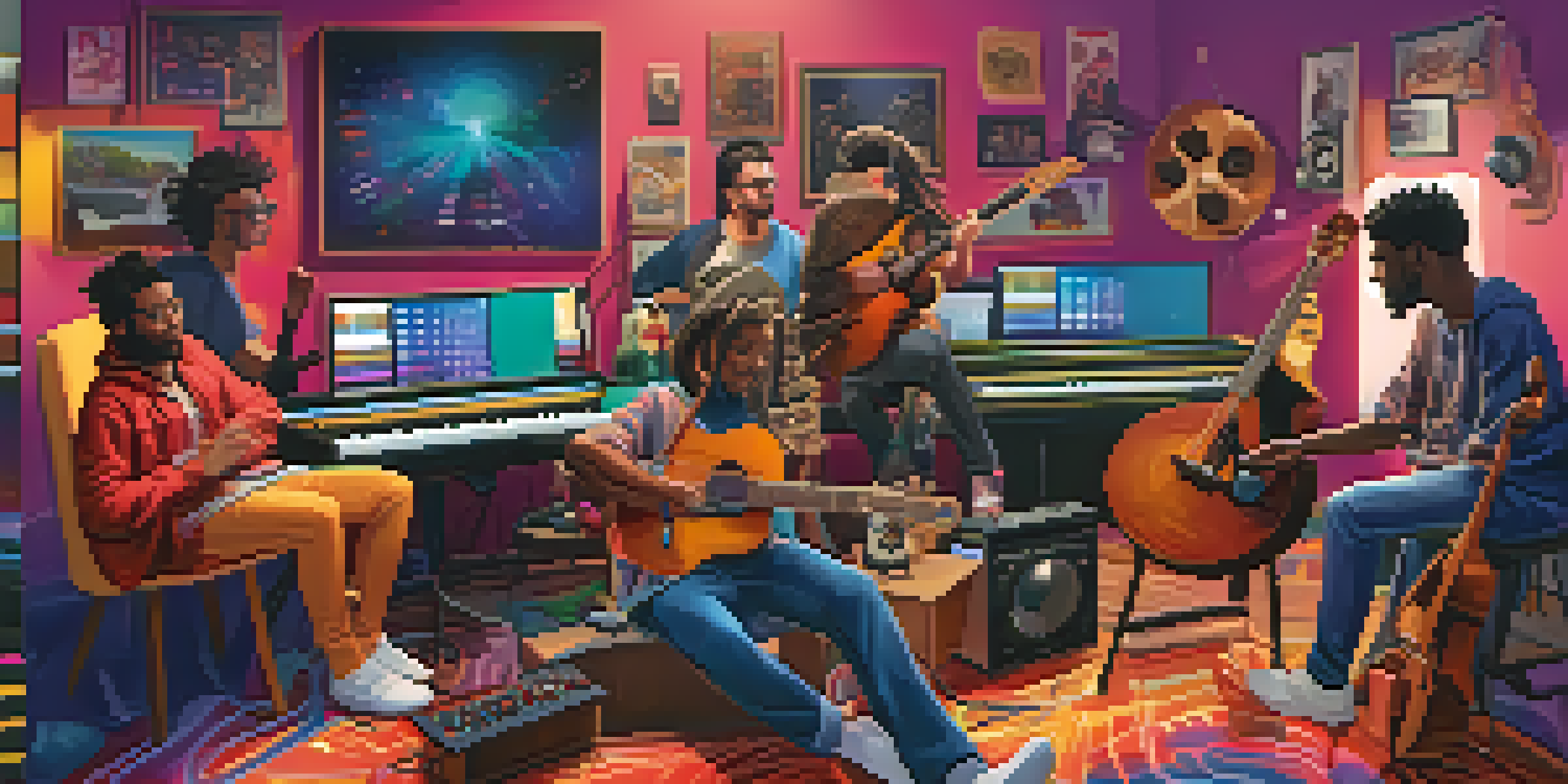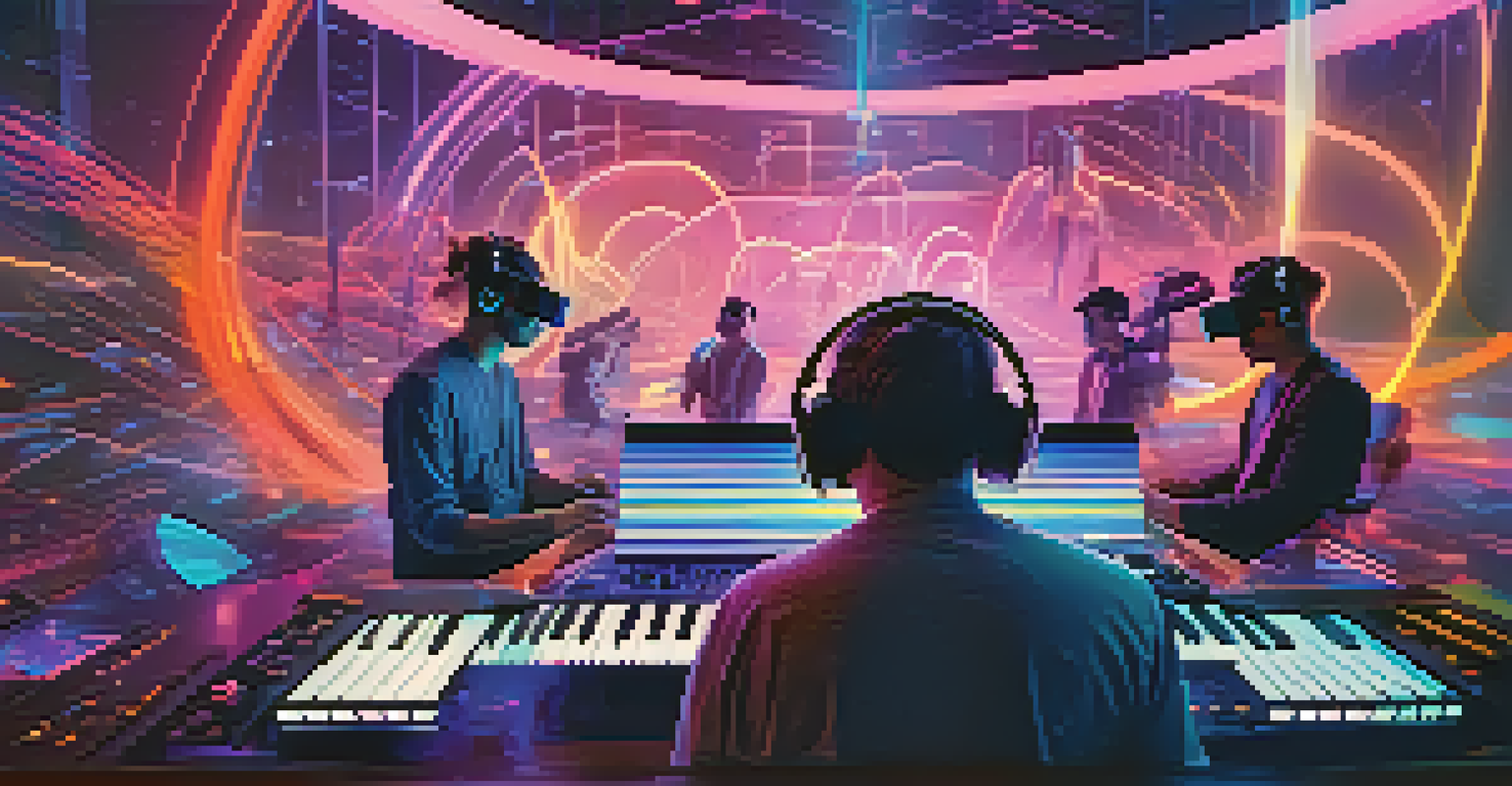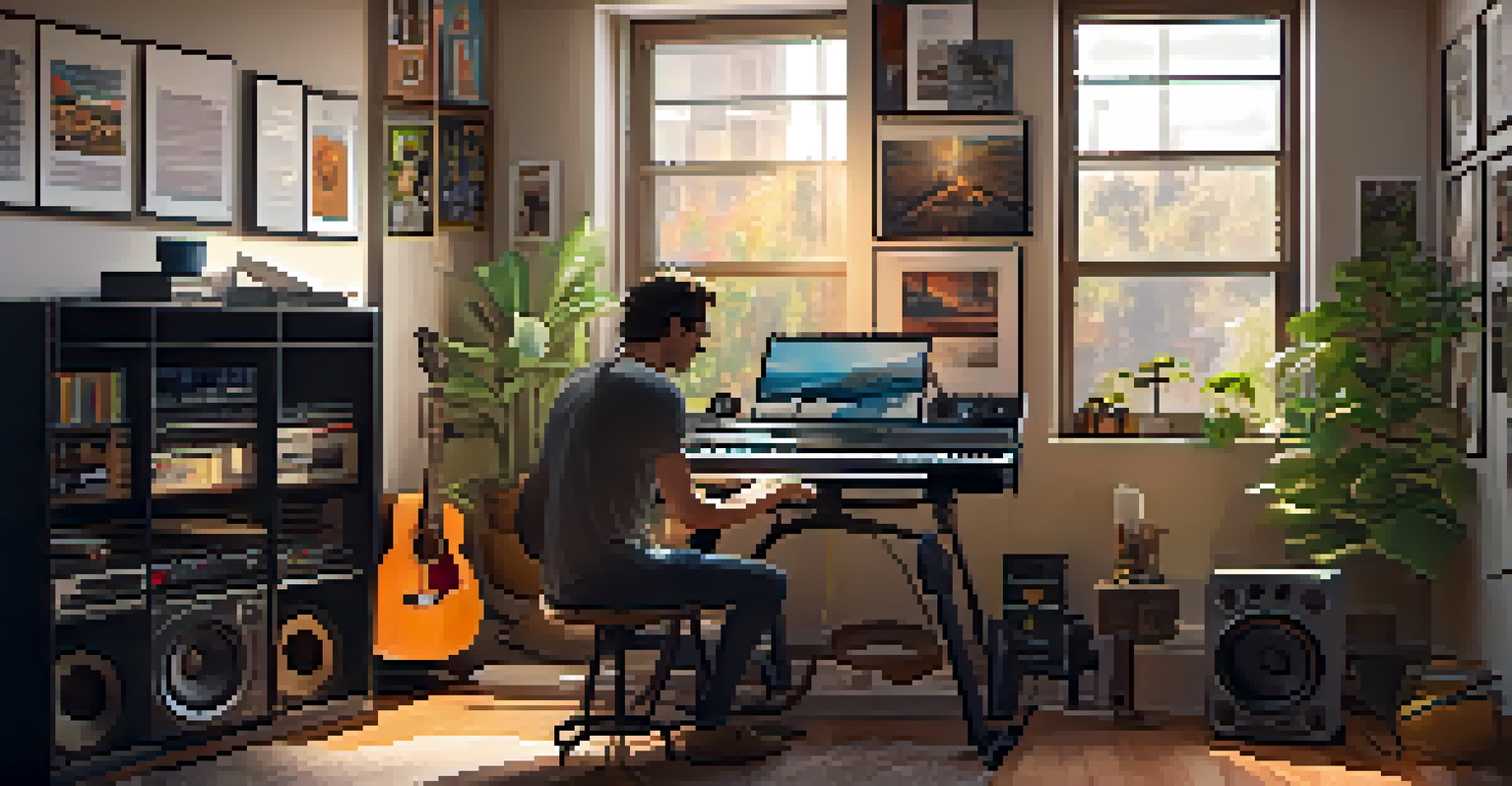Virtual Collaboration: Making Music in a Digital Age

The Rise of Virtual Collaboration in Music
In recent years, virtual collaboration has become increasingly popular in the music industry. Artists from around the globe are leveraging technology to create music together without geographical constraints. This shift allows budding musicians to connect with established artists, leading to innovative sounds and diverse genres.
Music is the shorthand of emotion.
One of the most significant aspects of this trend is how it democratizes music creation. With just a computer and an internet connection, anyone can contribute to a project, regardless of their physical location. This opens the door for diverse influences and ideas, enriching the overall musical landscape.
Moreover, the pandemic accelerated this trend, pushing many musicians to adapt to online platforms for collaboration. Virtual sessions became the norm, showcasing the resilience of artists and their ability to thrive in challenging circumstances.
Tools for Virtual Music Collaboration
A variety of tools and software have emerged to facilitate virtual music collaboration. Platforms like Soundtrap and BandLab allow musicians to record, edit, and share tracks in real time, making it feel almost like being in the same room. These tools provide features that foster creativity, such as loops, samples, and built-in effects.

Additionally, services like Zoom and Discord have become popular for live jam sessions and brainstorming ideas. Musicians can discuss concepts, share feedback, and even perform together, albeit virtually. This makes the collaborative process feel more engaging and personal, bridging the gap created by distance.
Virtual Collaboration is Transforming Music
Artists can now collaborate across distances, leading to innovative sounds and diverse genres.
As technology continues to evolve, we can expect even more innovative solutions that enhance the virtual collaboration experience. The integration of artificial intelligence and augmented reality, for instance, could take online music-making to the next level, making it even more immersive and interactive.
The Benefits of Collaborating Remotely
One of the most significant advantages of virtual collaboration is the flexibility it offers. Musicians can work on their own schedules, allowing for more creativity and less pressure. This is especially beneficial for those juggling multiple commitments, such as jobs or family responsibilities.
The beautiful thing about learning is that no one can take it away from you.
Additionally, remote collaboration encourages the exploration of different musical styles and genres. Artists can easily collaborate with individuals from various backgrounds, leading to unique fusions of sound that might not have been possible otherwise. This cross-pollination of ideas often results in innovative music that resonates with broader audiences.
Virtual collaboration also expands networking opportunities. Musicians can connect with peers, producers, and industry professionals worldwide, creating a web of relationships that can lead to exciting projects and career advancements.
Navigating Challenges in Virtual Music Creation
While virtual collaboration offers numerous benefits, it also presents unique challenges. One common issue is the potential for miscommunication, as nuances in tone and expression may be lost in a digital format. Musicians must be proactive in communicating their ideas clearly to ensure everyone is on the same page.
Another challenge is the technical aspect of collaborating online. Not everyone has access to high-quality equipment or stable internet connections, which can affect the overall sound quality. Musicians often need to invest in better tools or find creative workarounds to ensure a smooth collaboration experience.
Challenges of Online Collaboration
Miscommunication and technical issues can arise, but clear expectations and regular check-ins can mitigate these challenges.
Lastly, maintaining motivation and momentum can be tricky in a virtual setting. Without the immediate feedback and energy of a traditional jam session, artists may struggle to stay engaged. Establishing regular check-ins and setting clear goals can help foster a productive environment even from a distance.
Case Studies: Success Stories of Virtual Collaboration
Many artists have successfully embraced virtual collaboration, creating standout projects that highlight the potential of this approach. For instance, the hip-hop collective BROCKHAMPTON thrived by collaborating online, merging their unique styles to produce critically acclaimed albums. Their ability to work together remotely helped them maintain a cohesive sound despite being geographically dispersed.
Another example is the band The 1975, which utilized various digital tools to collaborate with other artists during the pandemic. By sharing ideas and files through platforms like Splice, they were able to produce new music while staying connected to their creative roots. Their success demonstrates how virtual collaboration can lead to innovative outcomes.
These success stories serve as inspiration for aspiring musicians looking to break into the industry. They illustrate that with creativity and the right tools, anyone can collaborate effectively, regardless of location or circumstance.
The Future of Music Collaboration
As we look ahead, the future of virtual collaboration in music seems bright. With advances in technology, we can expect new platforms and tools that further enhance the collaborative process. Innovations like 3D audio and virtual reality could create immersive environments for musicians to connect and create together, making the experience even more engaging.
Furthermore, the growing acceptance of remote work in various industries suggests that virtual music collaboration will continue to thrive. Artists are increasingly recognizing the benefits of flexibility, diversity, and creativity that come from working with others online. This shift may lead to new genres and movements that redefine the music landscape.
Future Innovations in Music Creation
Advancements in technology promise even more immersive and engaging virtual collaboration experiences for musicians.
Ultimately, the key to successful virtual collaboration lies in embracing experimentation and innovation. Musicians who are open to exploring new methods and technologies will likely find themselves at the forefront of the next wave of musical evolution.
Tips for Successful Virtual Music Collaboration
To make the most of virtual collaboration, it's essential to establish clear communication from the outset. Set expectations regarding deadlines, roles, and responsibilities to ensure everyone is on the same page. Regular check-ins can help maintain momentum and foster a sense of teamwork, even when working remotely.
It's also crucial to be open to feedback and willing to adapt. Collaboration is about blending ideas and perspectives, so being receptive to others' suggestions can lead to more innovative outcomes. Remember, the goal is to create something unique that reflects the collective vision of the group.

Lastly, don't forget to have fun! Music is a form of expression, and collaborating with others should be an enjoyable experience. Embrace the creative process, experiment with new sounds, and cherish the connections you make along the way.